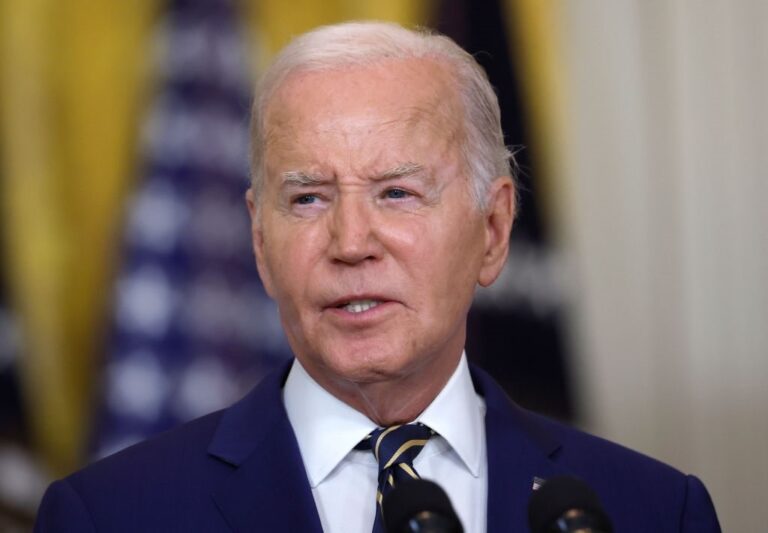Biden Signs 10-Year Support Pact with Ukraine
A sign of good intentions, but little more.
By: GenZ Staff | July 5, 2024 | 630 Words

(Photo by Kevin Dietsch/Getty Images)
President Joe Biden signed a ten-year defense pact with Ukrainian President Volodymyr Zelensky, an agreement intended to show America’s enduring commitment to the beleaguered country. Both leaders extolled the virtues of the agreement as a statement of intentions to ensure that Ukraine can stand up to the current unprovoked Russian invasion and any future incursion on Ukraine’s sovereignty.
Early indications that the agreement was in the works prompted speculation that the pact was more to prevent a future US president – namely, Donald Trump – from reducing or eliminating financial and military support to Ukraine than anything else.
Good Intentions to Support Ukraine Abound
Sections of the pact talk about bolstering defense and security cooperation in training and military education programs, cooperation on economic recovery and reform, and institutional reforms to advance Euro-Atlantic integration. The last section commits to preparing Ukraine to develop an armed force that is more easily integrated into NATO.
The essential elements of the agreement are spelled out in the document’s annex. To ensure that Ukraine is headed toward a capable future force, “The United States commits to support Ukraine in developing a modern, NATO-interoperable force that can credibly deter and, if necessary, defend against future aggression.” To that end, the agreement provides the US intention to support Kyiv’s military in eight combat-critical areas:
- Air and missile defense – Including the Patriot system
- Surface-to-surface missiles and artillery – including “munitions and targeting capabilities to employ indirect and long-range fires, as well as unmanned aerial systems.”
- Maintaining and sustaining legacy tanks and armored personnel carriers.
- Modernizing the Ukraine air force with modern fighter aircraft, specifically the F-16 multi-role fighter.
- Improve Ukraine’s defense of its territorial coastal defense with unmanned systems and surface vessels.
- Support Ukraine’s capability to increase cybersecurity and protection of its critical infrastructure.
- Improve command and control – emphasizing material and non-material support focused on NATO-interoperable systems
- Sustain and maintain combat systems and equipment — an area where the US will support Ukraine with “logistics, personnel services, and health service support.”
All the domains the US has committed to are critical to Ukraine’s sustained fight with the Russian invaders. However, there are some very big caveats. For example, Biden’s commitment to supporting Ukraine with F-16 fighter aircraft and pilot training has not been a rapid success.
Almost immediately following the February 2022 invasion, Ukraine asked for more modern fighter aircraft, allowing them to contend more effectively with the Russian aircraft attacking Ukrainian ground forces. It took more than a year for the US to agree to provide the jets. There does not appear to be any language in the agreement that accelerates the American decision process.
Biden Is Committed to Good Intentions
 Regardless of what President Biden believes he has committed the US to provide, if it costs the taxpayers money, Congress must agree. The very last sentence in the agreement is the kicker: “The United States and Ukraine intend to implement the commitments under this annex consistent with applicable law and subject to the Availability of appropriated funds.” In the last go-round of appropriating money for Ukraine, it took over six months to get Congress on board.
Regardless of what President Biden believes he has committed the US to provide, if it costs the taxpayers money, Congress must agree. The very last sentence in the agreement is the kicker: “The United States and Ukraine intend to implement the commitments under this annex consistent with applicable law and subject to the Availability of appropriated funds.” In the last go-round of appropriating money for Ukraine, it took over six months to get Congress on board.
Whatever President Biden might have intended regarding holding a future president hostage to the pact, there’s little desire in Washington to bring the issue of Ukraine aid up again until next year after the six-month fight required to convince Congress to approve this latest $60 billion round of funding. As The New York Times pointed out, “if Mr. Biden were no longer in office, that commitment would mean little.” Perhaps all the Biden administration wanted to do was send a message to Russia that the US remains committed to helping Ukraine. For the time being, the bilateral accord is a friendly gesture, but not much more.
















